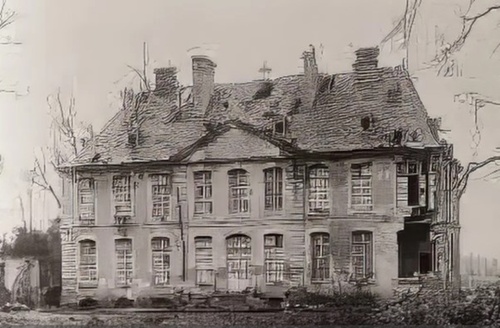Auction: 25001 - Orders, Decorations and Medals
Lot: 80
(x) The campaign group of five awarded to Private D. Bradley, 1st Suffolk Regiment, who was killed in action on 28 June 1944 during the ferocious battle for Chateau de La Londe, a location immortalised by war correspondents as 'the bloodiest square mile in the whole of Normandy'
The Battalion was involved in taking the vital Hillman Fortress, one of the toughest German fortifications Allied troops faced on D-Day
India General Service 1936-39, clasp, North West Frontier 1937-39 (5826063 Pte. D. Bradley. Suff.R.); 1939-45 Star; France and Germany Star; Defence and War Medals 1939-1945, contact marks, good very fine (5)
Donald Bradley was born at Manchester and enlisted in the 1st Battalion, Suffolk Regiment as a regular soldier before the Second World War.
The outbreak of the Second World War saw the 1st Battalion, Suffolk Regiment stationed at Devonport as part of the 8th Infantry Brigade, 3rd Infantry Division and served with the British Expeditionary Force in France from late 1939 to May 1940. With the rest of the B.E.F., the Battalion was evacuated from Dunkirk in 1940. The next four years were spent training in the United Kingdom for the invasion of Normandy in 1944. The 1st Battalion landed on Sword Beach just before 09.00 on 6 June 1944 and was involved in attacking and taking the vital Hillman Fortress, one of the toughest German fortifications the allied troops faced.
Codenamed 'Hillman' by the British it was headquarters to the German 736th Regiment, who had 150 men and officers stationed there. It was a fortified site with 18 underground concrete bunkers linked by a series of tunnels and trenches surrounded by Tobruk machine gun pits, barbed wire and minefields. The site is located 2.3 miles inland from Sword Beach next to the village of Colleville-Montgomery and was constructed by the Germans from 1942.
With a commanding. panoramic view over Sword Beach, it was the control centre for the German defences in the area. The main bunker is four meters underground, had an armoured observation cupola and housed the command headquarters, signal centre, mess rooms and sleeping quarters.
Not only was Hillman larger than expected, it was also unscathed. It was supposed to have been bombed and targeted by naval gunfire before the Suffolks got there, but that hadn't happened. Assaulting it was a daunting prospect. The first attack was made by A Company of the 1st Suffolks after engineers had cleared a path through the mines and barbed wire perimeter. However, the attack was beaten off.
A second attack, this time with a softening up barrage from the Royal Artillery and tank support from the 13/18 Hussars, finally overran the site by 20:15, except for two command bunkers which proved impenetrable. Even their cupolas and armour bounced anti-tank rounds from the Hussars' Sherman Firefly 17-pounder guns. Holed up inside the bunkers were 70 German troops, who spent an anxious night surrounded by enemy forces before Colonel Krug led them out to surrender in the morning.
On 28 June 1944 the Regiment attacked the Chateau de la Londe and whilst they achieved their objective it came at a heavy loss of 161 men killed, wounded or missing, including Bradley. At the fall of the Chateau and its surrounding defences war correspondents described it as 'the bloodiest square mile in the whole of Normandy.'
Donald is buried at the La Delivrande War Cemetery, Normandy, France.
A documentary film 'The Bloodiest Square Mile' was produced as a tribute to all the Veterans of the 1st Battalion the Suffolk Regiment who fought in Normandy in 1944: thebloodiestsquaremile.com
The Imperial War Museum also has a short film dedicated to the men of the 1st Suffolk Regiment: www.iwm.org.uk/collections/item/object/1060019494
Subject to 5% tax on Hammer Price in addition to 20% VAT on Buyer’s Premium.
Estimate
£400 to £500
Starting price
£320







